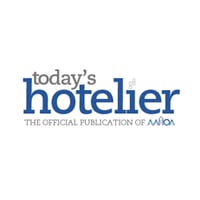There’s no debate that the world has been transformed over the past three years. The pandemic has...
Published Articles
The Sobering Reality of 2020 & A Crystal Ball for 2021
The global lodging industry sustained the most challenging year in its history as a result of the COVID-19 pandemic. The impact will be felt for years. The dual hit of public health restrictions on travel along with an economic downturn wreaked havoc upon the hotel business.
After a thorough review of 2020 performance and the 2021 forecast, it appears there are two primary variables that inform how properties and markets were affected and will recover going forward: RevPAR composition and a hotel’s price tier. Understanding the composition of RevPAR by rate category is essential in order to explain how a particular property, comp set, submarket, or market has been affected by the pandemic and what it faces in terms of recovery. The hotel’s price tier often correlates to its dependence on larger corporate and group accounts that dropped off in 2020 and will experience a protracted return.
What Happened in 2020?
U.S. hotels ended 2020 down slightly more than 52% from 2019 in RevPAR with ADR running -25% for the fourth quarter of 2020 and occupancy between -35% to -40% compared to 2019.

When we evaluate performance by chain scale, the lower tier (economy and midscale hotels) performed far better than other types in 2020, running between 67% to 77% of 2019 RevPAR. Their 2021 recovery will be similar. Expected RevPAR is 83% of 2019 performance for economy and 75% of 2019 RevPAR for midscale hotels. The middle tier (upscale and upper midscale) ran middle-of-the-pack for 2020 and is expected to be in the same position for 2021. Upper midscale hotels are forecast to finish 2021 at 66% of 2019 RevPAR with upscale hotels at 58% of 2019 levels. The upper tier (luxury and upper upscale) took the biggest hit in 2020 with RevPAR about one-third of 2019 levels. Upper tier hotels are expected to recover in 2021 to slightly less than 50% of 2019 levels.

Some unusual aspects of 2020 hotel performance centered on how the pandemic affected demand. Business travel, both transient and group, fell in many markets by as much as 75% to 95%. In the absence of this base, hotels depended on leisure or personal travelers to fill rooms. With leisure travel as the dominant source of demand, the proportion of business by week part changed. Weekend (Friday and Saturday) and shoulder dates (Sunday and Thursday) made a stronger contribution than weekdays (Monday through Wednesday).

When examining the impact by location, it’s clear that the greater a market’s dependence on corporate and group business, the bigger hit it took in 2020. Further, the pace at which commercially driven travel returns will drive the recovery. The top 25 markets in terms of hotel supply represent over 1/3 of the U.S. supply but they absorbed almost half of the loss in demand (room nights) between March and December 2020.


BETTER TIMES AHEAD Now that we’re in 2021, the hotel industry is eager to see improvement. But public health issues will delay the start of a true economic recovery. The pace of vaccinations is one factor. The need for reliable rapid testing along with maintenance of safety protocols, such as social distancing and mask requirements, may also influence the return of travelers through most of 2021 and potentially longer. Due to limitations on vaccine distribution and COVID variants that could cause additional infection spikes, recovery forecasts will be a moving target. There’s also uncertainty around the lag time before large corporations send travelers back on the road and on local, county and state guidelines for gatherings of more than 50.
2021 FORECAST: EXPECT UNEVEN RESULTS Many markets and submarkets with limited dependence on large commercial accounts for individual or group travel may hit 2019 RevPAR levels sometime in 2022. Hotel industry analysis
 company Kalibri Labs carves the U.S. into 975 submarkets. They predict almost 150 will end 2021 within 20% of 2019 RevPAR. A few may even exceed 2019 levels by year’s end. Another 150 submarkets at the other end of the spectrum will remain under 50% of 2019 RevPAR. The remaining 675 will fall somewhere in-between. The most notable changes over the pre-COVID period (2018-2019) is the absence of corporate and group business that in 2019 made up about one-third of total U.S. RevPAR. Among upper tier hotels (luxury and upper upscale), this business was almost 50% of total RevPAR.
company Kalibri Labs carves the U.S. into 975 submarkets. They predict almost 150 will end 2021 within 20% of 2019 RevPAR. A few may even exceed 2019 levels by year’s end. Another 150 submarkets at the other end of the spectrum will remain under 50% of 2019 RevPAR. The remaining 675 will fall somewhere in-between. The most notable changes over the pre-COVID period (2018-2019) is the absence of corporate and group business that in 2019 made up about one-third of total U.S. RevPAR. Among upper tier hotels (luxury and upper upscale), this business was almost 50% of total RevPAR.While much of 2020’s corporate and group business wasn’t replaced, any compensation for its loss was largely through
 direct channels, specifically Rack/BAR and direct-to-hotel promotions including loyalty member rate programs. The transient business coming through direct channels increased 14.5% for
direct channels, specifically Rack/BAR and direct-to-hotel promotions including loyalty member rate programs. The transient business coming through direct channels increased 14.5% for 2020 with indirect transient business (GDS, OTA and FIT wholesale) declining by 11.7%. Groups fell by almost 40%. The 2021 outlook calls for group and corporate to be similar
to 2020 as a percentage of total demand. Rack/BAR and direct promotions will have the strongest growth compared to 2019. In 2020, OTA ran neck-in-neck with direct promotion/ loyalty member rates. This is expected to continue into 2021 with a slight edge to direct business.
The return to 2019 demand levels for corporate and group will begin in 2021 but it will be a slow climb back. Restrictions based on public health guidelines will limit recovery in the first half of 2021. Corporate may cross the -50% mark (vs. 2019) by mid-year, but group won’t get to that point until sometime in 2022. The third and fourth quarters of 2021 will see somewhat better results, but most demand will remain in the primary transient segments of Rack/BAR, loyalty member rate/direct promotions and OTA.

SUMMARY For years it was enough to simply track a hotel’s RevPAR and strive for a strong index against a short list of nearby hotels. COVID revealed how the loss of a few key business segments can significantly undermine a hotel’s performance. Now it’s more important than ever to understand the RevPAR composition and re-think your competition. The rules have changed. If the gap in commercial travel is a meaningful part of your demand and it’s slow to return, you’ll have to cast a wider net within your submarket to find opportunities and work to replace as much legacy business as you can. For those less dependent on business transient and group, the economic recovery has been slow moving but will pick up by the third quarter of 2021 and yield positive outcomes by the end of 2022.




